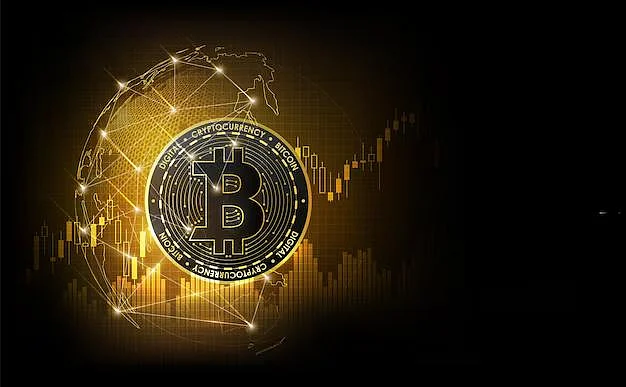In the rapid blockchain and cryptocurrency ecosystem, token minting is a critical process that allows projects to create new digital tokens. It may be a utility token, a governance token, or stablecoin, but it is minting that defines how and when new tokens enter the circulation pool. Although token economies require minting, unregulated token minting—if left without definite rules and oversight—threatens a risk of quite considerable magnitude to the reliability, safety, and trustworthiness of a blockchain project.
This article looks at what is unlimited token minting, how different types of risks it entails, and how projects can be assured to have a secure, clear, and trustworthy token system.
Understanding Token Minting and Its Purpose
Token minting is a term that describes in essence the generation of new tokens on a blockchain network. In this virtual world, as opposed to money that has to be produced physically, minting is controlled by consensus algorithms and smart contracts. Projects can mint tokens as a reward for a validator, as funds in readiness, to drive user action, or to inject liquidity into the system.
But while token minting renders everything dynamic, it also puts immense power in the hands of projects. If a project's minting is centralized, bad code, or there are no checks and balances, it puts everyone at risk of exploitation, inflation, and manipulation.
What is Unchecked Token Minting
Unchecked token minting is the minting of new tokens with insufficient constraints, transparency, and accountability. This might be because of an inadequately coded smart contract, overly centralized control of the minting authority, or deliberate lack of governance oversight. Malicious developers or hacked protocols in some cases can mint an arbitrary quantity of tokens—unintentionally as a bug or deliberately to drain value from uninformed investors.
Uncontrolled minting is like a central bank issuing money and not taking care about inflation, monetary policy, or the trust of people. Eventually, the system collapses on its own uselessness.
Critical Risks of Uncontrolled Token Minting
Uncontrolled minting is dangerous not just for the project itself, but also for investors, users, and the wider blockchain community.
1. Investor and User Exploitation
If too many tokens are being produced, supply is growing without demand or utility increases. Inflation results and value per token is diminished. The myth of ever-expanding supply undermines investor trust and can lead to a price collapse.
If project insiders or project developers are allowed to own sole rights of minting, then they can saturate the market with newly minted coins at price manipulation for their own benefit. Innocent investors and users get devalued or worthless assets.
2. Smart Contract Vulnerabilities
All the token minting operations are based on smart contracts. These smart contracts, if badly coded or inappropriately audited, can be exploited by hackers to impersonate the minting process. It only takes minutes to lose millions of dollars with one line of bad code.
3. Governance Failure and Centralization
When minting rights are held by a privileged group of people, this is contrary to the decentralized nature of blockchain. Projects with infinite minting usually also lack good democratic governance practices, making the users powerless to decide protocol matters or resist fraudulent schemes.
4. Reputation Damage and Legal Investigation
Unchecked minting cases can create long-term harm to the reputation of a project. Moreover, such actions set a stage for legal reprimand, especially when regulatory authorities are tightening their noose on scam crypto projects. Not just does it affect the offending project but also rattles the credibility of the entire crypto coins and tokens space.
Case Studies of Unchecked Minting Gone Wrong
There have been a number of crypto failures over the past few years due to their minting processes being unregulated or subject to hacking. They have proceeded in the following order: a backdoor or loophole within a smart contract is discovered, millions of tokens are minted, the price of the token collapses, and community trust is lost.
While specifics vary, the outcome is always disastrous—users lose their funds, devs abandon the project, and exchanges delist the token. These incidents highlight the importance of secure and clear minting protocols.
How Projects Can Ensure Secure and Responsible Token Minting
In order to avoid risks of unregulated minting, projects must adopt best practices guaranteeing transparency, decentralization, and technical solidity.
Transparent Tokenomics Design
The first is to design an open tokenomics model. It must have a clearly defined supply cap (whenever possible), fixed-inflation or emissions programmatically, and publicly released details on how the minting mechanism works. The users need to be aware of the exact number of tokens in existence currently, the number that will be minted in the future, and under what circumstances.
Smart Contract Audits and Formal Verification
All minting operations within smart contracts must be hard-tested and audited by highly reputable third-party firms. This reduces the possibility of code-level exploits being misused to mint unauthorized tokens.
Multi-Signature and DAO Governance Models
In order to prevent centralized control, minting rights should be held by a DAO or multi-signature wallet. This will mean that no individual can mint tokens except by multiple stakeholders' consent; rather, there will have to be consensus among multiple stakeholders. This democratic approach fosters trust and prevents abuse.
Timelocks and Community Oversight
Timelocking for activities of minting offers an opportunity for community assessment and challenge of any timelocked minting events. In the case where the system accommodates community sentiment or voting, malicious activity can be reported and arrested prior to causing harm.
Emergency Stop Mechanisms (Circuit Breakers)
A well-functioning smart contract may also have circuit breakers—emergency stops that can freeze all minting and transferring in the case of unusual behavior. Developers and community leaders may monitor and react before harm is done irrevocably.
Final Thoughts: The Role of Safety in Token Creation
Untamed token minting is not merely a technical problem—it's a failure of governance, a moral mistake, and a financial hazard. As blockchain initiatives compete for mainstream adoption and mass market awareness, they must appreciate that trust is their most valuable asset.
Promises are made with every token minted—of utility, value, and community. If that promise is broken with bad intent or irresponsibility in minting, the whole thing falls apart. Projects are in a position to build solid ecosystems, empowering users rather than taking advantage of them, by being able to integrate transparency, smart governance, and technical discipline into their minting mechanism.














